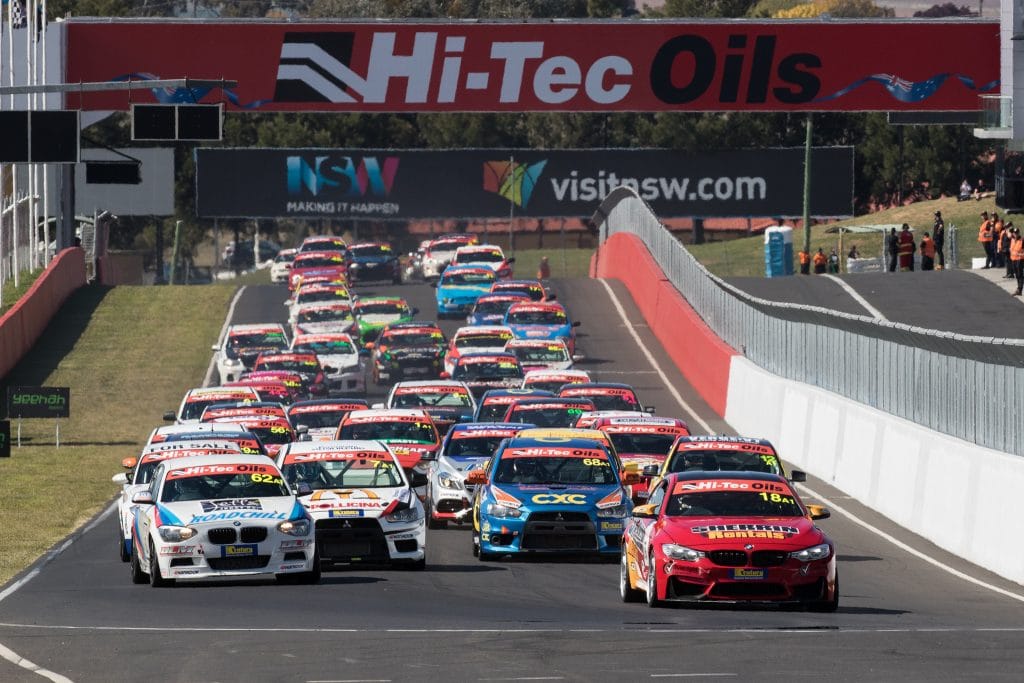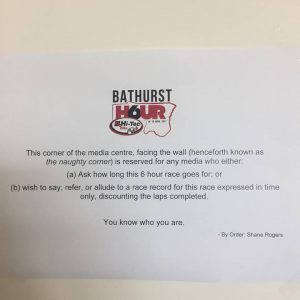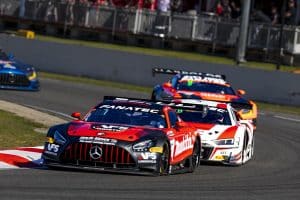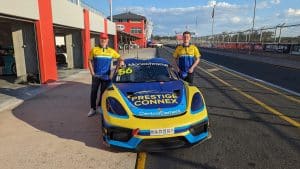MAIN PHOTO: Insyde Media
Mount Panorama has delivered again: Sunday’s Hi-Tec Oils Bathurst 6 Hour was an epic, enthralling endurance race with twists and turns, drama, controversy and once again, a climactic finish. Here are six discussion points coming out of this year’s production car enduro.
1. Turning up to an endurance race with an un-tested package is a risky proposition
Technology is always improving, and cars are undisputedly more reliable than they used to be, but the 6 Hour demonstrated it’s still a highly risky proposition to be turning up for an endurance event in a car that has no previous racing mileage.
The two most prominent examples of this were the Grant/Iain Sherrin BMW M4 and Chaz Mostert/Nathan Morcom Ford Focus RS. Both cars arrived at the circuit having completed shakedown sessions, but never actually having raced. The Sherrin BMW generated plenty of pit-lane discussion with its breathtaking straight-line performance, but mechanical gremlins ultimately cost the brothers a finish.
The Mostert/Morcom car at least made it to the chequered flag but the flat-out sprint to the line uncovered a vulnerability in the gearbox – Mostert lost fifth and sixth gears with just a handful of minutes remaining, gifting the lead and the win to the Paul Morris/Luke Searle BMW.
Further down the order there were other teams with new cars that had problems as well, and in the end nine of the race’s top 10 finishers were cars that had previously competed in endurance races.
2. Is it time to look at a better caution system?
11 Safety Cars taking up a total of 33 laps, and 2 hours 47 minutes – the numbers don’t lie, and when almost half the total race time is spent trundling around behind the Safety Car, questions need to be asked.
Yes, the incessant SC periods kept a lot of cars on the lead lap and kept the margins tight, contributing to the grandstand finish we saw, but it also robbed us of the opportunity to see different strategies playing out, such as the need to manage fuel range or inequality in performance between drivers over longer green-flag stints. And as always, building a margin at the front of the field became a pointless exercise because it would inevitably be wiped out by another Safety Car.
The Safety Car also resulted in class battles becoming distorted – for example, there was a situation where the outright leader had lapped all bar the leading car in Class A2, so when the Safety Car was deployed, the Class A2 leader gained almost a lap advantage over the other Class A2 cars.
On commentary, Richard Craill advocated the continued use of the Safety Car as the best measure of neutralising the field during an incident – sorry Craillsy, but I disagree with you on this one. In a race like a Bathurst 6 Hour, a Virtual Safety Car or Code 60 would have several advantages from both safety and sporting perspectives:
- It would be instant – all the cars would be restricted to a speed limit, unlike Sunday where we had cars doing almost a full lap at racing speed to join onto the back of the queue after completing a pit stop.
- A leader who has built an advantage over their pursuers would not have it wiped out.
- Class battles wouldn’t be distorted.
- Upon an incident being cleared, racing could resume immediately rather than waiting until the end of the lap.
I’ve written about this topic before here and many of my previous arguments were reinforced in the 6 Hour.
3. How many cars are too many?
A lot of the blame for the numerous Safety Cars was laid squarely at the feet of the grid size; 64 starters was certainly a lot of cars – the most-ever to start an endurance race at Bathurst – and even then, it was still short of the 72-car grid capacity.
The conundrum of how many cars are too many is not an easy one to solve, and the size of the field is not always directly proportional to the number of Safety Cars, although pure maths says a larger grid means a higher chance of incidents.
It would be a shame to reduce the grid size, as the sheer number of cars was part of what made this year’s 6 Hour so special. Other methods of increasing green-flag running and dealing with incidents, as discussed above, could be considered instead.
4. Traffic management is a worthwhile skill
International GT racing and multi-class endurance races are becoming more and more popular as a destination for aspiring professional racers. These events often have a significant speed disparity between cars.
Being able to efficiently navigate traffic can be a decisive factor in the outcome of these races and not a lot of junior development categories provide an environment in which young drivers learn this skill.
Such drivers could do a lot worse than competing in a race like the Bathurst 6 Hour to sharpen up their race-craft, or other events with a large variety of vehicles like the Australian Production Car Series, Wakefield/Winton/Queensland 300s or even the 24 Hours of Lemons races.
5. Do we need a better balance of performance system in production cars?
This was another hot topic in pit lane over the weekend, especially with the Sherrin BMW M4 clocking an astonishing 277km/h top speed down Con-Rod Straight, faster than the BMW M6 GT3!
Yes, the BMW was slower in the middle sector, across the top of the mountain, but at a circuit like Mount Panorama which places such an importance on straight-line speed, the M4’s massive top-end performance was more than enough to overcome its handling deficit, and this was reflected in the lap times.
A balance of performance formula is used in international GT3 racing to ensure all cars are on a level playing field, and although a similar formula exists in the Australian production car scene, people are justifiably questioning its value after the weekend.
It’s something that needs to be addressed, otherwise competitors will gravitate towards the car with the best performance and that’s not what we want in production cars; we want variety and diversity.
6. The naughty corner
This year’s Bathurst 6 Hour was the fastest on record; the 6hr 1min 28.885sec race time of the winning car eclipsed last year’s race time of a shade over 6hr 4min. So it was a race record.
The chequered flag is displayed to the leading car on the lap after the six-hour duration has elapsed, so I reckon setting the fastest time is a real challenge – it involves going as close as possible to the six-hour mark without going under it.
However, my media colleagues disagree with me on this point, which led to some light-hearted banter in the media centre over the weekend and Bathurst 6 Hour social media guru Shane Rogers’ creation of the “naughty corner” which I was sent to for the first time since primary school.





